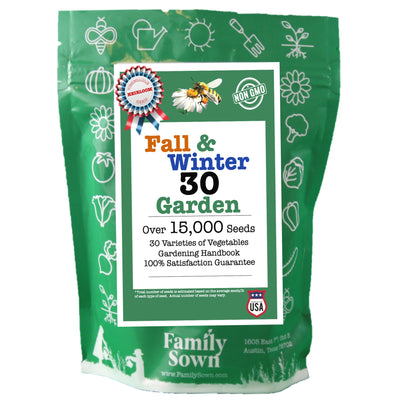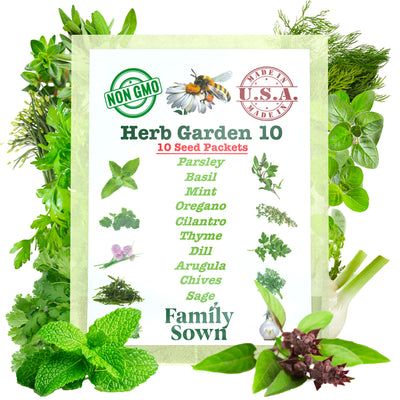Pumpkin

Quick Reference:
Harvest Type: Single
Transplant/Direct Sow: Direct sow or transplant
When to Plant: Direct sow when the soil is above 70°F. Indoors 3-5 weeks before the last average frost date.
Days to Germinate: 4-10 days
Days to Maturity: 90-120 days
Planting Depth: 1” deep
Germination Temp: 70°F
Seed Spacing: Plant in hills with 3-4 seeds per hill. Space hills at 4-8' apart. Thin to 1 plant per hill when plants have 4 sets of leaves.
Light: Full sun
Soil pH: 6.0-8.0 pH
Water: 1" of water per week
Soil Temperature: 70°F
Fertilizer: 12-10-10 N-P-K ratio for seedlings. 10-12-10 or 10-15-10 N-P-K ratio for fruit development.
Rotation: Annually
Planting and Care:
Harvest Type
Pumpkins are a single harvest fall crop.
Transplant / Direct Sow
It is easier to sow seeds directly, but you can start the seeds indoors 3-5 weeks before the last average frost date if you are in a short summer growing zone. Pumpkins need 70°F soil temps to thrive, and they will not tolerate frost.
When to Plant:
Plant pumpkins when the soil temperature is 70°F, after the last average frost date for your area.
Days to germinate
It takes pumpkin seeds about 4-10 days to germinate.
Days to maturity
It takes about 90-120 days.
Planting Depth
Plant seeds at 1 inch deep in hills with 3-4 seeds per hill
TIP: Plant pumpkins and squash in hills so the sun will warm their roots. They are heat-loving plants.
Germination Temperature Range
Pumpkins need warm soil that is 70°F. They do not like cool weather, so plant May-July in most places.
Spacing Between Plants
Pumpkins have long arms and will fill a 10-10 garden space. Space hills 4-8 feet apart and let them sprawl.
TIP: Keep the pumpkins off the ground to prevent ground-rot. Place the fruit on a seed flat or board. In places where the temperature is very hot, use a shade cloth to keep the pumpkins from cooking in the heat. The fruit does not need light.
Growing conditions
Pumpkins require a two-phase fertilization method. Fertilize with nitrogen when you plant the seeds. Work the ground with compost or aged manure or use a commercial 12-10-10 N-P-K ratio fertilizer. Doing so helps the plants produce leaves. When they blossom, switch to a 10-12-10 or 10-15-10 N-P-K ratio fertilizer for fruit development.
Companion Plants
Corn, cucumbers, pole beans, sunflowers, herbs such as lavender and sage are excellent companion plants for pumpkins.
Rotation
Rotate pumpkin crops each year and on a three-year cycle. The cycle rotation method means you would not plant pumpkins in the same spot for three years. They are heavy feeders of both nitrogen and phosphorous.
Anticipated yields
Plan your garden yield at 1-2 pumpkins plants per person. Expect to yield 10-30 pounds of pumpkins per 10-foot row section. Pumpkin is excellent canned or frozen. Smaller varieties can be grown vertically to save garden space. Be sure to trellis them and give them strong support.

























